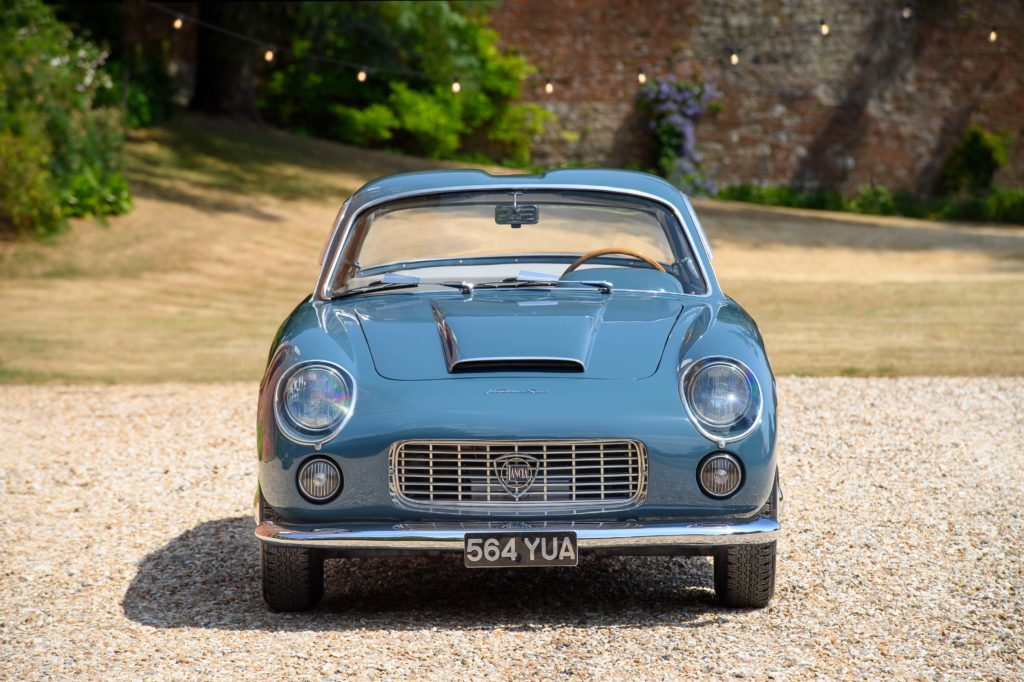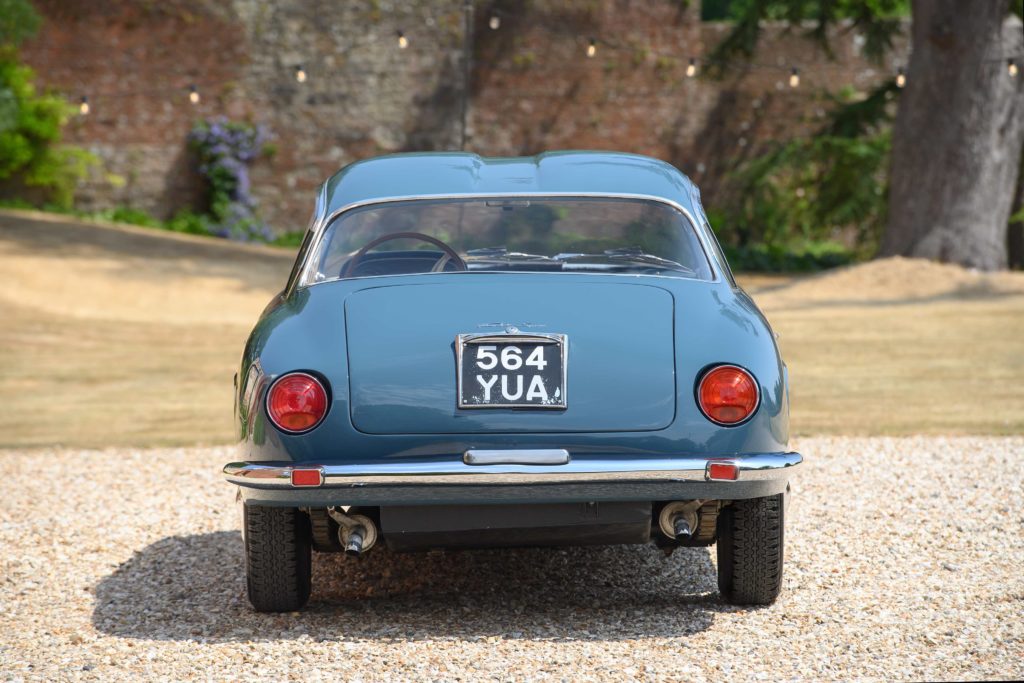Anyone looking to buy a Lancia today can only do so in Italy. Unless, of course, you go for a nice used car, like this sultry-lined 1959 Flaminia Sport Zagato.
Text: Gerben Bijpost Photography: Tim Scott 2022 Courtesy of RM Sotheby's
The Lancia Flaminia gets its name from the Via Flamini, the bumpy road that took you from Rome across the Apennines to the Adriatic coast as far back as Roman times. It is still there, is but has been partly overtaken by modern times and has had to make way for sleek asphalt.
Just as has happened to Lancia, which was still a leading car brand in the 1950s and 1960s that excelled for its design and sophisticated engineering, but has seen its international presence shrink to Italian territory (although a -complete electric- comeback in 2026 in the offing).
 Lush
Lush
This seductive Flamina Sport Zagato was unveiled at the 1957 Turin Motor Show. It had the same shortened wheelbase as sister model Touring GT, but the youthful Ercole Spada, chief designer at Zagato, the studio responsible for the design, opted for lush flowing lines in contrast to the streamlined coupé profile characteristic of many sports cars of the era.
Also notable were the double bubble roofline (once devised to provide helmeted heads with ample space), doors fitted with folding handles and the low, functional air vent on the bonnet. Sporty features that suggested impressive performance and in that respect, the Flaminia Sport Zagato did not disappoint (although a future owner thought otherwise).
 A total of only 526 examples of the Flaminia Sport -and later Super Sport- were built between 1959 and 1967. A rare little car, then. But it gets even better. In fact, the earliest examples had covered, partially dispatched headlights. These were soon banned in Italy, so only 99 of these cars were made.
A total of only 526 examples of the Flaminia Sport -and later Super Sport- were built between 1959 and 1967. A rare little car, then. But it gets even better. In fact, the earliest examples had covered, partially dispatched headlights. These were soon banned in Italy, so only 99 of these cars were made.
Almost all of these 99 cars were fitted with a 2.5-litre engine with single Solex carburettor, good for 119 hp. But only five cars of those were fitted by Lancia by special request with a more powerful 150 hp triple Weber engine. And of those, this is one.
Competitive
To give you an idea of just how competitive the car was: the famous French F1 photojournalist Bernard Cahier tested a Lancia 3C 2.5-litre Flaminia Sport Zagato in 1961 and found that its acceleration times were almost equal to those of an Aston Martin DB4 and a Ferrari 250 GT, stating, moreover, that "the Lancia's excellent roadholding, plus its terrific torque at the bottom, would make it very hard for these cars to keep up".
This early example, equipped with perspex side and rear windows and competition seats, as well as that special competition engine, was first registered in Varese in early 1960. What followed over the decades was a journey through various owners in Europe, eventually ending up in the UK.
 Retrieved
Retrieved
To get even more enjoyment out of the car, the owner there decided to boost the car's potential, using, of course, only original Flaminia parts. So he bought a complete 2.8-litre Flaminia Supersport engine, with the larger 40 mm carburettors and a Supersport gearbox.
After enjoying this for a while, he had the engine further upgraded to 180 hp and, with long-distance rallies in mind, an additional 15-litre fuel tank and two electric fuel pumps were fitted. In this configuration, the car was used for rallies all over the world, from Chile and Argentina to Scotland, France, Switzerland and, of course, native Italy. Perhaps even during a rally bearing its own name, the small-scale Via Flaminia Corse.
That journey has now, for now, come to an end: it is for sale. Thanks to many modifications, even better than new. But fortunately including the complete and original 2.5-litre 3C competition engine and accompanying gearbox. After all, there are always people who find originality even more important than a nice dose of extra speed.

For special cars like this and countless others: check the auction site of Sotheby's.



